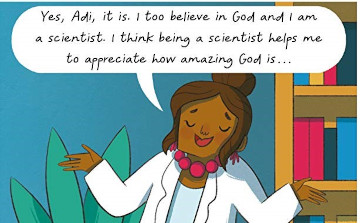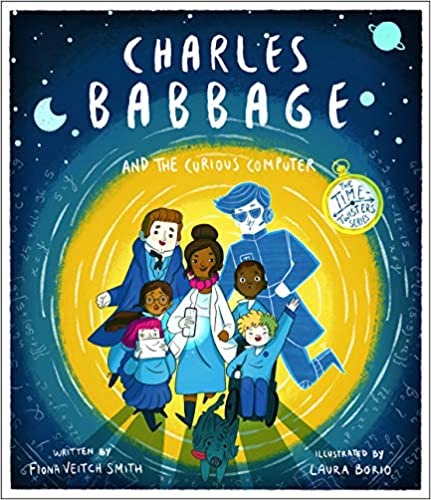Charles Babbage and the Curious Computer is a 48-page graphic novel written for children ages seven to nine. It is the first of a planned series titled “The Time-Twisters Series.” The overarching goal of the series is to help children understand that science and faith work together rather than being in conflict. The story is told in a full-color comic-book style with a time-travel storyline—features likely to engage the interest of young readers.
This book introduces children to Charles Babbage, a prolific inventor who is credited by many with the invention of the first computer in the mid-1800s. A time-travel director, known as The Timekeeper, helps a science teacher and her science club members travel back in time to meet Babbage and some of his friends. The story conveys information within this slightly dramatic storyline. The conflict in the story arises only because the time travelers have to be gathered together for their return at a precise moment or forever be left in the wrong time period.
Children will learn briefly about other characters that inhabited Babbage’s world, especially Ada Lovelace who worked with Babbage on his inventions. They might be surprised at the idea of a large mechanical computer—so different from those of today that can be held in one hand.
The “faith and science working together” aspect shows up toward the end of the story when Babbage makes comments such as, “When I see the wonderful way mathematics works, and the way the world works like an incredible machine, my faith in God deepens” (p. 35). At the back of the book, two pages supply further information about Babbage, including his beliefs about God.
 One technical aspect of the book might be an issue for some readers. While the story uses a plain font to convey what is happening, the font used for dialogue is a slant print that looks almost like cursive. This might be challenging for some children to read. I’m including an image showing that font so you can decide for yourself whether this might be an issue.
One technical aspect of the book might be an issue for some readers. While the story uses a plain font to convey what is happening, the font used for dialogue is a slant print that looks almost like cursive. This might be challenging for some children to read. I’m including an image showing that font so you can decide for yourself whether this might be an issue.
The author and publisher of this book are British, which is evident in references to “returning in time for tea” and Babbage’s mention that he considered becoming a vicar. These references might puzzle children from other cultures, but they can also serve as interesting points of discussion. They shouldn’t pose a barrier to a non-British audience.
The author and artist created interesting personalities for the time travelers in Charles Babbage and the Curious Computer, and I expect that we’ll be following their adventures in future stories.









